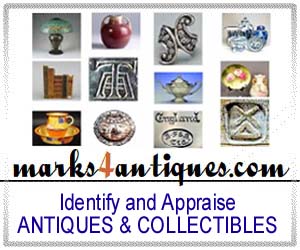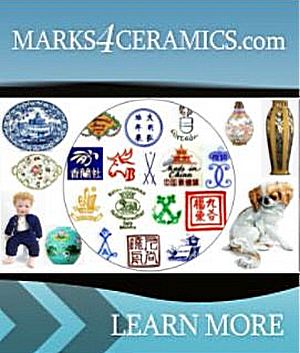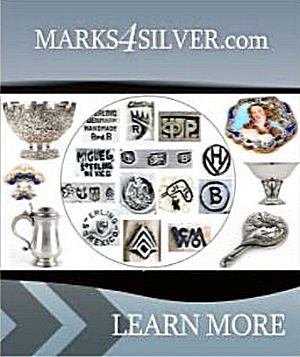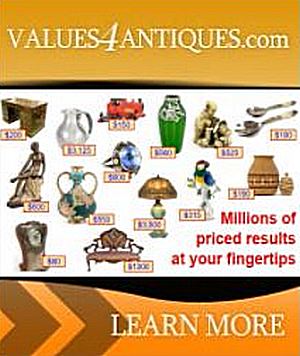Identification and Price guides for Antiques & Collectibles

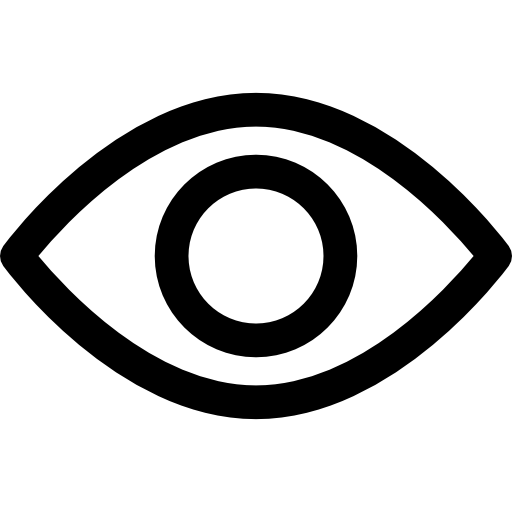
ONION PATTERN CHINAWARE & PORCELAIN
Appraisal Values & Pricing Guide
Join the most updated and complete collectibles research online - Learn more...
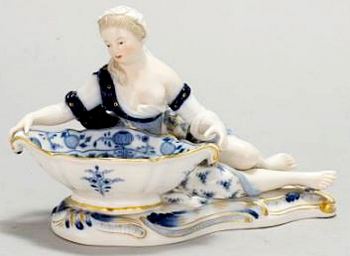 Although the Onion Pattern on chinaware has a definitive Oriental appearance, its origins are from 18thC Germany, when Johan David Kretschmar, a mid-18thC designer at Meissen, created this decorative motif in an effort to imitate the then popular Chinese Ming tradition on imported porcelain. It is characterized by thin lines & shapes that were meant to resemble pomegranate and/or peach fruits and foliage, but which somehow were interpreted as onion bulbs by early buyers and the name stuck. In fact, the official name for this pattern was ZWIEBELMUSTER, which literally means Bulb Pattern in German.
Although the Onion Pattern on chinaware has a definitive Oriental appearance, its origins are from 18thC Germany, when Johan David Kretschmar, a mid-18thC designer at Meissen, created this decorative motif in an effort to imitate the then popular Chinese Ming tradition on imported porcelain. It is characterized by thin lines & shapes that were meant to resemble pomegranate and/or peach fruits and foliage, but which somehow were interpreted as onion bulbs by early buyers and the name stuck. In fact, the official name for this pattern was ZWIEBELMUSTER, which literally means Bulb Pattern in German.
Several other chinaware companies and porcelain factories quickly emulated the same design in slight variations, most notably the Eichawld Factory [now Cesky Porcelan in present-day Dubi, Czech Republic], since 1885 and as subcontracted and marked by Meissen, Enoch Wedgwood since the 1870s in the UK referred to as the Meissen Pattern, Kahla, Hutschenreuther, Rosenthal, and more recently a Japanese version known as the Blue Danube Pattern. As always with very popular patterns, later reproductions also abound, made by many generic porcelain factories in the Far East and which are often of good quality.
Pink, green and even black or gilt Onion Pattern chinaware have been readily produced, but the most original and desirable color for this design has been blue - hence the common reference to it as Blue Onion or Blau Zwiebelmuster in German. Forms & shapes include just about anything that can be made in porcelain, with Tableware being definitely the most abundant. Porcelain figurines, decorative centerpieces, porcelain clocks & garnitures, lamps, vases, compotes, cutlery handles, porcelain boxes, and nowadays even coffee mugs, are just some of the other imaginative ways of celebrating this ornamental style.
The Transferware [decals] technique has been the most prevailing method to decorate blank-ware with the Onion Pattern at most factories' manufacturing settings, which always also requires some hand-painting for enhancing the finer features and to also integrate the individual details in a harmonious overall visual concept. Skilled modelers and artisans train for several months and in some instances years, before engaging in the fine art of finishing and balancing the various stylistic elements that make up this pattern.
In spite of its widespread popularity and the corresponding increase in production, both in volume as well as in its variety of items, the Onion Pattern has maintained high prices at auction when sold as a collectible, especially so for authentic and older Meissen examples. Large size and uniqueness in shape are very important pricing factors, with rarer specimens valued the most and as expected. For porcelain tableware & chinaware, completeness of a Set is critical and of course, the condition is paramount as such objects would have normally been in use and frequently somewhat damaged if not cared or stored properly.
Unlock the true value of your collection with our comprehensive research guides from identifying makers' marks to appraising all kinds of antiques and collectibles, including items featured in this article.
Our up-to-date information will give you an accurate understanding of your items' worth. Don't miss out on this valuable resource - visit our research tools today!
In addition to some examples shown below on this page, you can also search our price guide for your own treasures.
Examples of related items from our Price Guides
-
(25) Pcs Meissen porcelain dinnerware, Blue [more like this]
-
PAIR OF MEISSEN BLUE ONION PORCELAIN PLATESPair [more like this]
-
(2) MEISSEN PORCELAIN FIGURAL SWEETMEAT DISHES(lot [more like this]
-
(78) BLUE ONION PATTERN ASSEMBLED DINNER [more like this]
-
A GROUP OF MEISSEN PORCELAIN IN THE BLUE [more like this]
-
A GROUP OF MEISSEN PORCELAIN IN THE BLUE [more like this]
-
A GROUP OF MEISSEN BLUE AND WHITE PORCELAIN [more like this]
-
Miscellaneous ceramics, including an Imari [more like this]
-
FINE PAIR OF MEISSEN PORCELAIN FIGURAL SALTSA [more like this]
-
(LOT OF 43) MEISSEN BLUE AND WHITE TABLEWARE [more like this]
-
(LOT OF 2) MEISSEN PORCELAIN COVERED OVAL [more like this]
-
(LOT OF 4) ASSEMBLED GROUP OF EUROPEAN BLUE [more like this]
There are many more auction results available to our members...
Explore more items from our
Antiques & Collectibles Price Guide
NEOCLASSICAL MERMAID HANDLED MONUMENTAL[more like this]
(LOT OF 4) ASSEMBLED GROUP OF EUROPEAN[more like this]
8 PIECE LOT OF CONTINENTAL BLUE AND[more like this]
15 PIECE LOT OF CONTINENTAL BLUE AND[more like this]
TWENTY-TWO PIECES OF CONTINENTAL BLUE[more like this]
A PAIR OF CONTINENTAL COBALT GLASS VASESA[more like this]
PAIR OF CONTINENTAL BLUE AND WHITE FAIENCE[more like this]
COLLECTION OF EUROPEAN BLUE AND WHITE[more like this]
PAIR OF CONTINENTAL COBALT GROUND PORCELAIN[more like this]
6 CUP 11 SAUCER: EXPORT CHINESE TEA[more like this]
Group of three ceramics; including two[more like this]
A Pair of Continental Cobalt Blue Glazed[more like this]
This list is limited to only a few results.
Many more items are available to our members through our
Price Guides!


